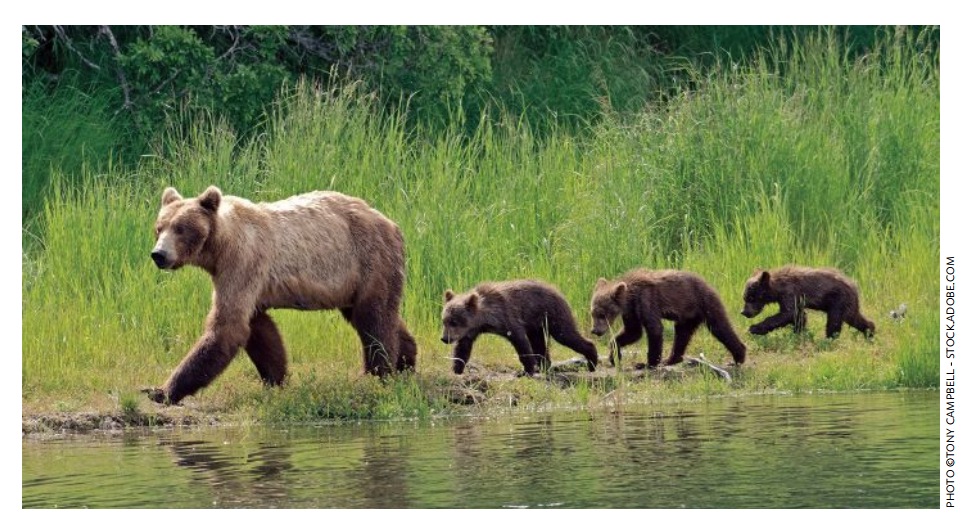Don’t Worry, Be Prepared
by Robert Eversole
 Last August in Idaho a woman was attacked by a bear. For weeks afterward, local newspapers printed page upon page about the encounter, warning their readers that dangerous animals were prowling the countryside. What if you were planning a ride or a horse camping trip when you read about this attack? Would you stay home, take extra precautions, or venture elsewhere?
Last August in Idaho a woman was attacked by a bear. For weeks afterward, local newspapers printed page upon page about the encounter, warning their readers that dangerous animals were prowling the countryside. What if you were planning a ride or a horse camping trip when you read about this attack? Would you stay home, take extra precautions, or venture elsewhere?
The great counterweight to the lure of the outdoors is the fear of the unknown. What if the weather turns for the worse? What if my horse acts up? What if I become lunch for a grizzly?
Here’s the hard truth. Most people spend entirely too much time and energy worrying about menacing (but low-chance) threats like bears, cougars, and wolves, and not nearly enough thought concerning themselves with the dull and common dangers like bees, blisters, and hypothermia.
To confirm this theory, take a quick test. How many times have you been mauled by a bear or a mountain lion? Now compare that figure with the number of times you’ve forgotten a piece of tack, dealt with an unruly horse, or lost a shoe to a muddy stretch of trail.
One reason riders and campers worry about the wrong things is largely the fault of the media, and writers like me. Adding the phrase “When Grizzlies Attack!” to the title sells more magazine copies, even if your chance of having a stand-off with a bear is much less than that of having a winning lotto ticket magically appear in your saddle bags.
I’m not suggesting that you ignore potential threats like bears, wolves, and cats, but to drop them a few rungs down the worry list. Obviously, if you’re riding or camping in an active bear area, take sensible precautions like making noise, bear-bagging your food, and avoiding huckleberry thickets. But don’t fixate so much on these critters that you spook at every rustle of the leaves, or even worse, fail to enjoy the ride and the trip. It all comes back to the most important outdoor skill anyone can practice: common sense.
Ignoring the hysteria can be hard to do and less than exciting. On rides with my wife I’ve been guilty of pointing into the forest and reminding her that there are undoubtedly creatures watching us as they sulk in the darkness. For some reason Celeste doesn’t seem to appreciate my wickedly keen sense of observation.
Here’s a few words to the wise. First, don’t alarm your wife, husband, riding partner, or others with tall tales of the abundance of apex predators. Second, prioritize your outdoor concerns with the help of these two lists.
Pay Attention to These…
- Ensure that you and your animals are in shape and condition for trail riding.
- Desensitize your horse to scary things you may encounter on the trail, such as hikers and bicycles, in a safe environment, such as an arena.
- Wear a helmet.
- Keep your dog leashed, under voice control, or home.
- Keep bugs away by applying a DEET-based insect repellant.
- Have an emergency plan in case a ride becomes “eventful”.
Worry Less About These…
- Bears – Black and grizzly bears have been responsible for 48 fatalities over the past 20 years. Compare that to the 40,200 traffic deaths recorded in 2016 alone.
- Quick Fact – Although California’s state flag features a grizzly bear, the only grizzlies that live in the Golden State reside in zoos.
- Mountain Lions/Cougars – There have been 25 cougar fatalities in the 127 years since the first was recorded in 1890. Compare that to the 610,000 people that die each year from heart disease.
Next article I’ll take a break from the doom and gloom and we’ll discuss preparing for your first backcountry horse camping trip. Until then visit www.TrailMeister.com for the largest and most comprehensive guide to horse trails, horse camps, and the tips and knowledge to enjoy them!

Robert Eversole, ”the trail meister,” owns www.TrailMeister.com, the largest database of horse riding and camping areas in the U.S. with free trail and trailhead information, trail maps, and much more to help horse enthusiasts experience the joys of trail riding. Robert is a registered riding instructor with PATH International, a mounted search and rescue team member, and a U.S. Marine who has served on the board of the Backcountry Horsemen of Washington (BCHW). He is enjoying his new career helping fellow trail riders stay found and safe on the trail. When not on the trail, The Trail Meister resides near Spokane, WA and teaches land navigation to a wide variety of outdoor groups across the nation. For North America’s largest horse trail and camping directory, trail tips, and more, visit www.TrailMeister.com.

